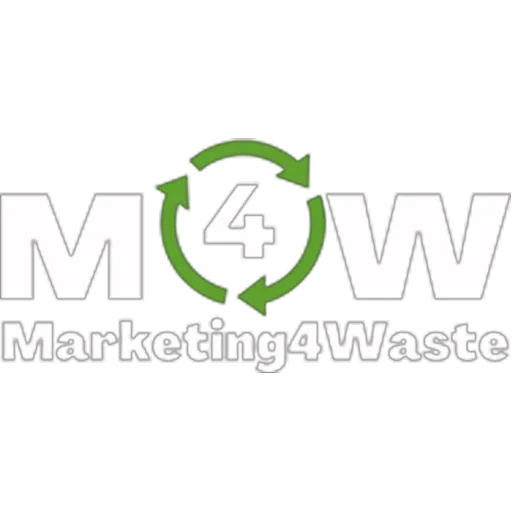Increase the Revenues of Your Waste Company With the Tips Shared in Our Blog Articles

Unlock Growth with This Simple Data Strategy for Waste Management: A No-Nonsense Blueprint for Busy Owners
Let’s be honest: in the waste management industry, growth isn’t just about picking up more garbage or adding more trucks. Growth is about making smart, data-driven decisions that position your company as the most reliable, efficient, and customer-focused option on the market. But how do you get there without pouring thousands into complex tech or hiring a data analyst?
The answer lies in a straightforward, actionable data strategy—a blueprint that any waste management company owner can use. I’m talking about a process that’s simple to set up, requires minimal ongoing time, and, most importantly, drives growth by uncovering new opportunities, improving customer satisfaction, and refining your operations.
Here’s your step-by-step guide to using data collection and analysis as a business strategy that will set your company up for long-term growth.
Step 1: Collect Foundational Data Without Extra Work
Most waste management companies don’t have time for complex data collection, and that’s fair. You’re focused on getting the job done and keeping customers happy. The good news is, data collection doesn’t have to add any extra workload. The first step is to collect data as part of your normal operations, making it virtually effortless.
Track Service Frequency and Types
Every time a truck rolls out or a pickup is made, log the service type, date, and location. This simple record will tell you what services are in demand (e.g., bulk pickups, hazardous waste), how often customers call on you, and where you’re making the most pickups. This alone gives you the foundation to see where your business is thriving and where there might be untapped potential.Log Customer Inquiries and Requests
When customers call in with questions or requests, jot down what they’re asking for. Every inquiry is an insight into what people want. Maybe you’re seeing frequent calls about bulk pickups or e-waste solutions—if so, this could be a new service to promote. Simple notes on customer inquiries provide valuable direction for new opportunities.Capture Customer Feedback
After each service, follow up with a quick question, like “How did everything go today?” Customers love feeling heard, and you’ll get valuable information on your service quality, consistency, and potential improvements. Collecting this feedback is as easy as adding a quick question to a phone call or sending a follow-up text.
Tool Tip: For now, keep it simple—a spreadsheet or even a paper log works fine. The key is consistency, not perfection.
Step 2: Analyze Your Data for Actionable Insights
Once you’ve got a few months of data, you’ll want to start digging in to find patterns and actionable insights. This step doesn’t require any fancy tools; it’s about pulling out the core insights that will help your business grow.
Identify High-Demand Services
Review your service logs to find which types of pickups or removals are most popular. Are there more requests for bulk pickups or seasonal yard waste removals? This tells you which services are driving revenue and where you may want to invest more resources.Spot Seasonal Trends
Compare month-over-month data. Maybe you see a surge in yard waste pickups each spring or bulk pickups after the holidays. Recognizing these patterns allows you to better allocate resources and even create seasonal promotions that capture these high-demand periods.Find Common Service Issues and Customer Needs
Go through your feedback logs and look for recurring issues. If several customers mention missed pickups or express interest in flexible schedules, you’ve got insight into potential improvements. Addressing these common requests can increase satisfaction and encourage long-term loyalty.
Tool Tip: Spend just 30 minutes a month reviewing this data. Highlight high-demand services, note any seasonal shifts, and flag feedback themes to prioritize changes. Simple, consistent analysis is key.
Step 3: Use Data to Guide Simple, Targeted Marketing Actions
Now that you know what services are in demand, where you see seasonal patterns, and what your customers are asking for, you’re ready to put this information to work in your marketing efforts. No need to break the bank; just focus on small, strategic actions that align with your insights.
Promote One High-Demand Service
Select a single high-demand service, like bulk pickups, to spotlight in your marketing. You don’t need a massive campaign—just mention it in customer communications, such as on invoices, emails, or even quick phone mentions. If you see a high return, you’ll know it’s a service worth prioritizing.Create Seasonal Specials Based on Trends
Use your identified trends to craft limited-time offers. If yard waste pickups are a big hit each spring, consider a “Spring Clean-Up Special” to capture even more customers. Seasonal promotions don’t require new advertising—just mention them in communications or have drivers remind customers when they’re onsite.Encourage Referrals from Satisfied Customers
If your data shows consistent customer satisfaction, leverage it. Create a referral program offering a discount or small bonus for customers who bring in new clients. Word-of-mouth is one of the cheapest and most effective ways to grow, especially in waste management, where trust and reliability are key.
Tool Tip: You don’t need new technology for this. Just add a line on invoices, a mention on the phone, or a simple email to communicate specials or referral incentives.
Step 4: Streamline Data Collection with Simple Tools
As your company becomes more comfortable with data-driven decision-making, it may be worth introducing a few easy, low-cost tools to streamline data collection and simplify your analysis.
Transition to a Basic CRM or Spreadsheet
Upgrade your paper log or spreadsheet to a basic CRM or even Google Sheets. Free CRMs like HubSpot allow you to store and search customer data quickly, making it easier to pull insights without sifting through stacks of paper.Automate Feedback Collection with Google Forms
Set up a Google Form that automatically sends customers a short feedback survey after each service. This automates your feedback collection and helps standardize responses, making it easier to analyze.Start Tracking Key Performance Indicators (KPIs)
Choose two or three basic metrics that directly impact growth, such as repeat customer rate, number of pickups per month, or referrals. Tracking these KPIs regularly gives you a clear picture of business health and shows where adjustments might be needed.
Tool Tip: Start with free tools like Google Forms and Google Sheets to automate some of the data collection. The goal is to make the process easier, not harder.
Step 5: Quarterly Review, Set Growth Goals, and Adjust
With a data-driven approach, it’s essential to regularly review results, set new goals, and make adjustments based on what’s working. Quarterly reviews give you the chance to reflect on your data and refocus efforts where they’ll have the greatest impact.
Assess Success and Identify Improvement Areas
Take an hour every quarter to review your promotions, service adjustments, and customer feedback. Identify which actions had the most positive impact. If a particular promotion boosted revenue, consider expanding it. If certain areas showed higher customer satisfaction, replicate those practices across all services.Set Clear Growth Goals for the Next Quarter
Use your findings to set one or two focused goals. For example, “Increase bulk pickups by 15%” or “Reduce missed pickups by 20%.” Setting small, achievable targets based on data keeps your business on a growth path without overwhelming your team.Stay Customer-Centric with Regular Feedback
Customer needs evolve, so never stop collecting feedback. Each review period, check for any new themes or issues and adjust your services accordingly. This approach keeps customers satisfied and strengthens loyalty, helping drive repeat business.
Tool Tip: Quarterly reviews don’t require any advanced analysis—just a willingness to act on trends. The consistency in these reviews is what will keep your business agile and growth-focused.
Conclusion: Data as Your Blueprint for Strategic Growth
Data isn’t just for tech companies. For waste management, data can be the fuel that drives smart, strategic growth—without high costs, extra workload, or fancy tools. By starting with basic data collection, analyzing trends, taking small targeted actions, and using free tools to streamline processes, you’re building a foundation that will support steady, sustainable growth.
Whether it’s understanding which services are in highest demand, knowing when customers need you most, or finding ways to improve customer satisfaction, this approach gives you a practical, clear path to growth. Implementing this data blueprint may just be the simplest, smartest investment you make in your business. And as the Waste Management Alchemist, I can tell you this: companies that start treating data as a core strategy today will be the ones thriving tomorrow.
So, grab that spreadsheet, make those notes, and start treating data as the strategic advantage it truly is. Growth is waiting, and with this approach, it’s well within reach.
To Your Success
Sam Barrili
The Waste Management Alchemist


© 2025 Marketing4waste - All Rights Reserved,
Marketing4Waste is a brand of MiM MarketingInterimManagers LLC
+1 801 804 5730

